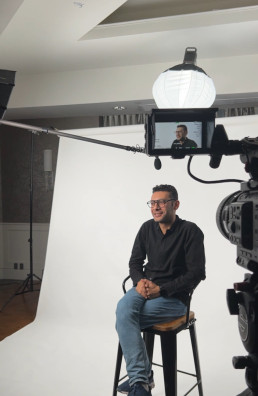Negotiation Unveiled: Mastering the Zone of Possible Agreement (ZOPA)
Welcome back to our enlightening journey into negotiation mastery through the lens of the Zone of Possible Agreement (ZOPA). I’m Ramy Ayoub, and in this installment, we’re delving into a cornerstone that can shape the destiny of your negotiations – the mastery of effective communication. Just as a conductor orchestrates a symphony, you too can master the art of communication to harmonize negotiation dynamics within the ZOPA.
The Role of Communication in Negotiation:
Negotiation is not just about numbers, terms, and clauses; it’s about the dynamic exchange of ideas, interests, and perspectives. Effective communication serves as the glue that holds negotiations together, transforming potential conflicts into collaborative solutions within the ZOPA.
Listening Actively: The Power of Understanding:
Listening actively is a skill that can transform your negotiation approach. Too often, negotiators focus on asserting their own interests without truly understanding the other party’s needs. By actively listening, you gain insights into their motivations, concerns, and priorities, creating a bridge between your aspirations and their goals.
Imagine negotiating a partnership agreement with a potential collaborator. Through active listening, you uncover their desire to expand into a new market. By acknowledging and incorporating this aspiration into the negotiation, you not only enrich the ZOPA but also build trust and rapport.
Expressing Your Interests Clearly: The Art of Transparency:
Just as you decode the other party’s interests through active listening, conveying your interests transparently is equally essential. Clarity in communication ensures that your counterpart understands your priorities, which can influence the direction of negotiations within the ZOPA.
Suppose you’re negotiating a project timeline with a client. Expressing your commitment to delivering exceptional quality within the agreed timeframe can shape their expectations and enhance the collaboration’s chances of success.
Building Rapport and Trust: The Foundation of Collaboration:
Rapport and trust are the cornerstones of successful negotiations. Building a positive rapport establishes a connection that goes beyond the negotiation table, creating an environment where collaboration flourishes. Trust, on the other hand, is the currency that lubricates negotiation interactions.
Imagine you’re negotiating a complex contract with a long-term partner. By acknowledging their achievements and demonstrating your commitment to a mutually beneficial outcome, you’re fostering rapport. Transparency and delivering on promises further build trust, making the ZOPA a fertile ground for agreement.
Navigating Cultural Nuances: A Global Perspective:
Negotiations often span cultures and borders, requiring a nuanced approach to communication. Cultural nuances influence language, body language, and communication styles. Being aware of these differences allows you to communicate effectively and avoid misunderstandings that can narrow the ZOPA.
Suppose you’re negotiating a joint venture with an international partner. Understanding their cultural communication preferences and adapting your approach can lead to smoother interactions, enabling you to explore a wider ZOPA by minimizing potential barriers.
Conflict Resolution and Effective Communication:
Conflicts are inevitable in negotiations, but they’re also opportunities for growth. Effective communication plays a pivotal role in turning conflicts into collaborative solutions within the ZOPA. Instead of escalating disagreements, focus on active problem-solving and compromise.
Imagine you’re negotiating a distribution agreement with a supplier and a dispute arises over delivery schedules. By engaging in constructive dialogue, exploring alternative solutions, and prioritizing a win-win outcome, you’re not only resolving the conflict but also broadening the ZOPA for future collaborations.
The Power of Nonverbal Communication:
Nonverbal cues – gestures, facial expressions, and body language – are a language of their own in negotiations. Paying attention to these cues allows you to gauge the other party’s emotions, intentions, and level of comfort. By adapting your own nonverbal communication, you can create an atmosphere that fosters open dialogue within the ZOPA.
In the next article of this series, we’ll explore the profound impact of emotions in negotiation dynamics. Get ready to delve into the world of emotional intelligence and how it influences interactions within the Zone of Possible Agreement. Stay tuned as we continue this empowering journey toward negotiation excellence. Until then, remember, effective communication is your most potent tool for shaping collaborative outcomes within the ZOPA!





